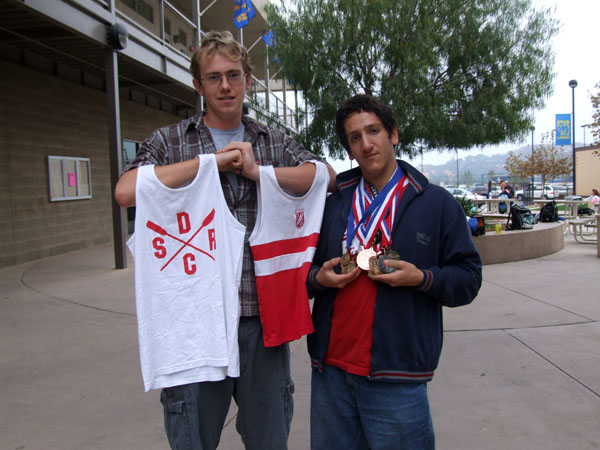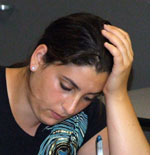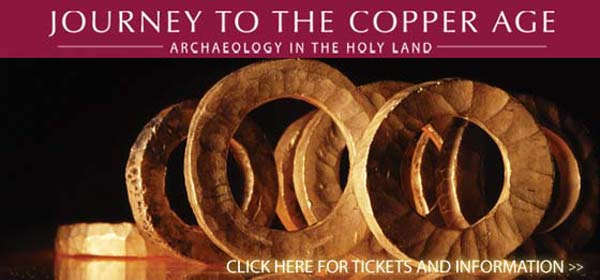|
The conundrum of the Gaza rockets
By Ira Sharkansky
 JERUSALEM—Rocket and mortar attacks directed against Israeli civilians from Gaza represent, in a nutshell, the conundrum of Israeli security. JERUSALEM—Rocket and mortar attacks directed against Israeli civilians from Gaza represent, in a nutshell, the conundrum of Israeli security.
The rockets and mortars cause individual disasters, a great deal of anxiety, and some property damage; but the record is not catastrophic. From 2001 to the end of November, 2007, some 2,400 rockets and 2,500 mortars made it out of Gaza. Most of them
Ira Sharkansky
landed in open areas, but those that did not caused 20 Israeli deaths and 583 injuries.
By some accounts, even more rockets exploded on their way to the launch sites or landed on Palestinians; and killed or wounded more of them than Israelis.
No less important than the deaths and injuries are the anxieties associated with the constant threat of attack and the numerous cases every day when a firing triggers sirens and recorded calls over the loud speakers to seek shelter. In the most recent 18 months, more than 1,600 individuals received on site treatment for stress. Many of these cases have been more lasting than the immediate symptoms. Residents of Sderot and other settlements close to Gaza shout their frustration and fears. The military and the government does not do enough to help.
A conundrum is a problem without a solution. The conundrum here is the impossibility of ending the rocket and mortar attacks completely, without causing damage to Israel and Israelis that is likely to be greater than the losses from the rocket and mortar attacks.
The rockets and mortars are easy and cheap to make, easy to transport and fire.
Israel can allocate more resources to harden existing structures near Gaza and construct more shelters. This seems to be the preferred policy, but every attack brings forth demands for more protection. Continued efforts in Palestinian workshops to increase the range of the rockets, and efforts to smuggle more powerful weapons over the border with Egypt suggest that the cost of an adequate defense would be considerable. It also brings forth opposition from politicians who want to go on the attack rather than bunker down and therefore give some measure of legitimacy to Palestinian attacks.
Israel does attack Palestinians associated with the rocket and mortar attacks. Pilotless aircraft are in the air all the time, and often guide helicopters to attack individuals on their way to or from a launching. Small and medium sized units of ground troops, with tanks and other equipment operate in Gaza. Some stay for several days, and may leave behind more Palestinian casualties than those caused by six years of rocket and mortar attacks against Israel. They also return with numerous prisoners slated for intensive questioning with an eye to later incursions.
Since Israel withdrew Jewish settlements in Gaza and thereby removed the settlers as targets of roadside ambushes and other violence, the balance of casualties has been strongly in Israel's favor. By that measure, the disengagement has been a success. Opponents count disengagement as a failure insofar as it got Israel no credit in Palestinian politics, and is associated with continuing rocket and mortar attacks on Israeli settlements within range of Gaza. The debate is not academic. It is associated with Israel's indifference in the face of demands from Americans and others that it withdraw other settlements from the West Bank. The rocket and mortar attacks from Gaza work against further disengagements.
We often hear that the IDF is preparing for an all out assault on Gaza. We also hear that the time is not ripe, and that substantial segments of the military oppose the idea.
Perhaps 1.5 million Palestinians live in several congested settlements in Gaza. The whole area is 25 miles long and 3-5 miles wide. A massive attack would cause numerous Palestinian casualties, and likely more Israeli casualties in a week or two of operations than have been caused by six years of rocket and mortar attacks.
The bottom line is, How many young Israeli men should die in order to prevent an average of 3 deaths annually from rocket and mortars? Moreover, the prevention would not be complete. Once Israeli forces left Gaza, the easy to assemble and move weapons could again begin to fly toward Israeli settlements.
If Israeli forces remained as an occupying army, they would expose themselves to continued attacks, and in all likelihood be unable to prevent all rocket and mortar attacks against Israeli settlements. For this reason, the IDF prefers small operations that move around within Gaza and do not remain there for more than a few days. Several of these operations have not only caused numerous Palestinian casualties, but have returned to Israel intact with no deaths or injuries. Generally speaking, a well trained army does more damage, and suffers fewer losses than gangs that are long on courage and enthusiasm, but short on training and equipment.
Israel is not burdened by American frustrations in Iraq and Afghanistan. This is due largely to Israeli operations in Gaza (and the West Bank) being close to home. The IDF can go in and out; do its job and not remain to become a target. One of my personal war stories as an IDF reservist is leaving home in Jerusalem after an early breakfast, driving to the Lebanese border, going over in a military vehicle, doing my job, and returning home in time for a late dinner.
Could the Israeli air force or artillery stop rocket and mortar attacks from Gaza?
They could do a lot of damage in a short period of time, with few if any Israeli losses. If pushed, perhaps by a missile that landed on a kindergarten and killed a dozen toddlers, the IDF could operate like it did in Lebanon last year: give residents a few hours to evacuate a target zone, and then destroy whatever structures had been giving refuge to the groups firing the rockets.
It would not take long for foreign governments, international and Israeli humanitarians to call foul on account of "disproportionate response." The Lebanese living in the south of their country could flee north in response to the Israeli attack in 2006, and residents of Hizbollah neighborhoods of Beirut could go elsewhere. There is not much place in Gaza for the residents to flee. Attacks like those on southern Lebanon and Beirut would quickly leave a sizable portion of the residents homeless. It is doubtful that Egypt would accept them as refugees, and even more doubtful that Israel would grant them sanctuary across its borders.
Currently it seems unlikely that there will be a massive Israeli attack on Gaza. But that unlikelihood depends on the politicians of the Israeli government. The pressure from Sderot and other communities near Gaza is intense. It can become unbearable with a spurt of casualties, especially children. If that occurs, the people of Gaza will want to flee, but have no place to go.

Har Homa is back in the news
By J. Zel Lurie
DELRAY BEACH, Florida—Har Homa -the mountain of the wall - is back in the news after a ten year hiatus.
Har Homa used to be a green-covered hill in the middle of a group of dusty Arab villages between Jerusalem and Bethlehem. It was annexed to Jerusalem in 1967 when Moshe Dayan was delineating the new frontier of Israel. To the south of Har Homa lay the West Bank, which he planned to return to Jordan.
Har Homa was a paradise of shade trees. It was the keystone of the green belt around Jerusalem created by Mayor Teddy Kolleck. The green belt remained stuck on the map as most of it was private Arab land and Teddy did not have the money to buy it. But the Palestinian owners could never get building permits, so many built illegally.
Har Homa was owned two thirds by Jews, including the Jewish National Fund, who had bought building plots before the country was partitioned. The southern hillside was owned by residents of the neighboring Arab village and there were a couple of antiquities owned by churches.
About a dozen years ago, an enterprising Jewish developer secured an option on both the Jewish and Arab owned land and hired an architect to make a plan that would preserve many of the trees while building Jewish and Arab neighborhoods and community centers and other amenities.
This sensible environmental-kosher proposal was rejected by the Likud government of Benjamin Netanyahu. Ten years ago, immediately after Netanyahu signed the Hebron agreement with Yasser Arafat, Netanyahu announced that a massive neighborhood of 6,500 homes would replace the trees of Har Homa.
The Clinton government in Washington had hoped that the Hebron agreement would b e followed by other steps towards Israel-Palestinian peace. Instead a protest tent was erected outside Har Homa, which was visited by foreign notables and their cameramen. Arafat went to Washington to complain to President Clinton. Dennis Ross brought a letter from Clinton to Netanyahu. Secretary of State Madeleine Albright ignored the 7-hour time difference and awakened U.S. Ambassador to Israel Martin Indyk in his Herzlia home at 5.30 a.m. She instructed him to give Netanyahu a firm message that constructing a new neighborhood at Har Homa “undermines everything we are trying to do.”
The Security Consul was convened. The United States vetoed the resolution on the grounds that it was unbalanced. The protest tent was dismantled, Everyone went home;
In ten years 4,000 Jews were settled in Har Homa. an isolated enclave surrounded on three sides by Palestinians.
I passed by Har Homa last spring. I saw a forbidding wall on top of which were apartments. I didn’t see any trees.
Today Har Homa is in the news again. Last Tuesday, on the day before the first scheduled meeting of Palestinian and Israeli negotiators agreed on at Annapolis, the government of Ehud Olmert trotted out Har Homa. The Minister of Housing issued a tender for the construction of 307 new homes at Har Homa.
Arabs and Jews protested. Saeb Erekat, the Palestinian negotiator said it sabotaged Annapolis. Americans for Peace Now pointed out that Har Homa is not part of Jerusalem’s urban structure. It is an isolated quarter in the middle of Palestinian villages and it is an obstacle to achieving peace on Jerusalem.” said the Peace Now statement.
At Wednesday’s meeting, the first official meeting of Palestinian and Israel officials since 2001, the Palestinians blasted the construction at Har Homa as contrary to the freeze on settlements promised in the Road Map.
The Israelis talked about the continued rocket and mortar firing from Gaza. The Road Map, they said, did not apply to Har Homa since it had been part of Israel since 1967.
It was noted, however, that no country has ever recognized the annexation to Jerusalem of Har Homa and 28 West Bank villages in whole or in part.
A second meeting awaited the conclusion of yesterday's Palestinian donors conference in Paris. The Palestinians are asking for $1.8 billion, two-thirds for their budget and one-third for business development.
An agreement is still possible but the settler opposition is rich and powerful. Expansion of Har Homa is chicken feed compared to what the settlers will unleash in the coming months.
CORRECTION: In my last column I said that the U.N. partition resolution of 1947 was passed in Lake Success. I had confused the committee meetings which were held in Lake Success with the plenary session, where the resolution was adopted by two-thirds vote, which was held in an old world’s fair building in Flushing Meadow.
***
I am baffled by a letter from a Delray Beach neighbor published last week. She writes: “Lurie’s goal is to achieve the total secularization of the State of Israel.” I wrote that the State is secular and the majority of Jewish residents are secular. Isn’t that enough?
But Israel is still the national home of the Jewish people. The late Arthur Hertzberg wrote an op-ed piece in which he spoke of the post-war travails of Jewish survivors, sneaking across European frontiers only to find the doors of Palestine shut in their faces by the British.
Never again will the frontier of Israel be closed to a Jew seeking refuge, wrote Hertzberg.


SDJA STUDENT QUARTERLY
They pull in the same direction, but rowers Bohannon, Ritblatt find they often disagree
Editor's Note: This is another in a series of articles reprinted from the SDJA Student Quarterly, published at the San Diego Jewish Academy
By Alexa Katz
 SAN DIEGO—Unbeknownst to many at the San Diego Jewish Academy we are in the presence of self-proclaimed “champions of champions” named Will Bohannon and Neriyah Ritblatt who spend their time after school rowing. Although rowing, or more formally titled “crew,” is a team sport, Will and Neriyah have very different viewpoints on what the sport is, their experiences within the sport, and whether they want to pursue rowing in the future. SAN DIEGO—Unbeknownst to many at the San Diego Jewish Academy we are in the presence of self-proclaimed “champions of champions” named Will Bohannon and Neriyah Ritblatt who spend their time after school rowing. Although rowing, or more formally titled “crew,” is a team sport, Will and Neriyah have very different viewpoints on what the sport is, their experiences within the sport, and whether they want to pursue rowing in the future.
What is rowing? According to Will, “Rowing is a sport which involves boats, oars, and moving through the water. The interesting thing is that the rowers
Alexa Katz
don’t really know where they are going because they are moving backwards, so[in rowing] you’re really moving backwards and sitting down at the same time.” Neriyah had a different take on it, describing rowing as “more of a lifestyle that can take up your entire time because it’s six days a week three hours a day.”
Both Will and Neriyah have traveled to places like New Zealand and Germany to row in tournaments. Neriyah replied that his favorite thing about traveling is he likes to “experience different styles of rowing.” They both seemed to have particularly enjoyed their trip to Germany where they “physically dominated the Germans at their own game.”
Before a regatta, or rowing tournament, they have different regimens. Neriyah enjoys “a bagel and juice” while Will, will eat “whatever’s there.”
They also have different viewpoints on the best things about rowing. According to Neriyah, “The best thing about rowing for me is that you really get a sense of peace and tranquility when you’re on the water.”Will stated that, “When you row it’s like floating through the clouds on an underwater necropolis.”
Their differences in opinion continue in that they have very different rowing idols. Will’s rowing icon is “Kurt Vonnegut because if I was Kurt Vonnegut I could row and write science fiction stories that talk about social issues at the same time.” While Neriyah’s idol is his mom “who really got [him] into the sport.”
Each of these rowers recalled some crazy rowing experiences. Will recalled a time in Germany where they surfed on the boat while Neriyah told a story about some technical trouble he had: “I was on the water…in a regatta and suddenly as we are getting towards the racing start … the person behind me damages his seat. .. This is right before the race—are you kidding me man! So I help him fix it because of course I am a master craftsmen…We shoot off the[start] line, but then all of a sudden it happens: Gabe’s seat knocks his teeth out, the oar hits him in the head, he flies backwards… in the water. The seat breaks … and we still got third.”
While Will does not want to pursue rowing in college because he considers rowing to be “useless,” Neriyah does aspire to row after high school. “I’ve done it for six years now and I’m a six-year seasoned rower,” he notes.

PEOPLE OF THE BOOKS
The ever-evolving rituals of Judaism
By Fred Reiss, Ed.D
 WINCHESTER, California—Ritual is religion put into action. For instance, Christians enjoy many forms of mass, have rituals and rites associated with Christmas, and the sacraments. Muslims fast during Ramadan and make a pilgrimage to Mecca. Jews have an assortment of rituals as well. These include kissing the mezuzah on entering and exiting a Jewish home, wearing a yarmulke (skull cap), tallis (prayer shawl), and tefillin (phylacteries). There are the rituals associated with the Seder and fasting on Yom Kippur (Day of Atonement) Dr. Sylvia B. Fishman in her newest book, The Way Into the Varieties of Jewishness, describes the dynamics of Jewish rituals. WINCHESTER, California—Ritual is religion put into action. For instance, Christians enjoy many forms of mass, have rituals and rites associated with Christmas, and the sacraments. Muslims fast during Ramadan and make a pilgrimage to Mecca. Jews have an assortment of rituals as well. These include kissing the mezuzah on entering and exiting a Jewish home, wearing a yarmulke (skull cap), tallis (prayer shawl), and tefillin (phylacteries). There are the rituals associated with the Seder and fasting on Yom Kippur (Day of Atonement) Dr. Sylvia B. Fishman in her newest book, The Way Into the Varieties of Jewishness, describes the dynamics of Jewish rituals.
To begin with, Fishman recounts the rituals celebrated by ancient Israelites
Fred Reiss
whose outward manifestation of Judaism was Temple based and land linked. Moving forward in time, she describes the observances formed during the Diaspora (beginning in 586 B.C.E. with the destruction of the First Temple) in Babylonia, then Jewish rituals that arose in connection with European enlightenment (beginning in the late 17th century), and concludes with American Judaism and how its various branches practice their rituals. Her main point is that in each of these periods, Judaism has rituals that differ from the preceding ones. The second part discusses ritual difference between (and among) Orthodox, Conservative, Reform, and Reconstructionist Judaism. There is also a concluding chapter on the future of Jewish ritual.
Many of the ancient Jewish rituals centered on the sacrificial system at and pilgrimages to the Tabernacle/Temple. When the Temple no longer existed after its destruction along with the capture of Judea by Nebuchadnezzar, the rabbis exiled to Babylonia substituted the synagogue for the Temple and prayer for sacrifices. Although the prophets Ezra and Nehemiah led a small cadre of Jews back to Jerusalem 70 years later and began construction of a second Temple with sacrifices, they added a new ritual by establishing a tri-annual reading of the Five Books of Moses (Torah). Today, it is not uncommon to find the Torah read annually.
For Judaism, there are no biblical injunctions to light the Hanukkah candles, or recite the blessings associated with everyday life. God never commanded Jews to hold a Seder (Passover meal) with the order and symbols associated with the feast. These came much later in Jewish history. The sages of the Talmudic period (200 C.E. – 500 C.E) decreed that Jews must perform these and other rites. With the destruction of the Second Temple and the dispersion of the Jewish people throughout the Roman world came a dichotomy of ritual between the Jews who migrated through Europe, living in fear under Christendom, and those who settled in the erudite Iberian Peninsula, under Muslim rule.
Ritual change came for Spanish Jewry because no one saw the Inquisition coming. Faced with the choice of conversion or death, many fled only to merge customs of their new country with the Jewish religion. With European Enlightenment came a dichotomy between those living in rural areas under the rule of a rebbe and those who fled to the cities. Ritual reflected the struggle between rationalism and superstition. Eventually, many of the descendents of these people would flock to America.
While the core of many Talmudic-era rituals remains, today’s observance of these rituals might not be recognizable to its authors. For example, since the middle of the twentieth century an overwhelming number of American Jews changed the holiday of Hanukkah from its simple celebration of lighting the Hanukkah menorah, playing dreidel, and the giving a few coins to children into a holiday of communal feasts, decorated homes, holiday cards (and now e-cards), and exchanging of gifts.
In the second part of her book, Fishman focuses on modern America and its invention of denominational Judaism. While there are clear ritual distinctions between the various denominations, the differences may be stronger within denominations than between them. Historically, Reform Judaism, which arrived in America first, recognized that Jews living in a democracy, in a society that allowed for social intercourse among all religions, and provided a path for upward mobility, had to change. America was not Europe. Taking its model from Protestantism, Reform Jewish rabbis introduced English into the service, eliminated biblical injunctions and rituals that fostered great distinctions between Jews and their neighbors, created seminaries to train rabbis and sustain Reform Judaism.
Orthodox Judaism, which arose from Eastern European immigrants in the late nineteenth century, gave a strict interpretation of God’s laws. Eastern European rabbis wanted America Jewry to mimic the Old World. Conservative Judaism intended itself to be a middle ground between the two. In reality, this did not occur because Conservative Jewry’s elite practiced rituals closer to orthodoxy while its rank-and-file members practiced Judaism closer to Reform Judaism’s practices.
Reconstructionist Judaism emerged in America without claims to a past in Europe. Accepted rituals and worship service arose from its laity, not leadership. Reconstructionist Judaism substituted naturalism for supernaturalism, thereby rejecting the idea of a transcendent and personal God. Many of its religious innovation are now common among all branches of Judaism, including the Bat Mitzvah and confirmation ceremony. Finally, Fishman briefly discusses today’s minor denominations, such as Humanistic Judaism and the Havurah movement. The former rejects the need for a supreme being within Judaism and the latter replaces the formal structure of the synagogue with small groups committed to worship innovations.
Fishman concludes with the idea that each denomination of Judaism faces its own challenge and suggests methods for mitigating them. She does not predict the direction of Jewish ritual in America. But, the future is obvious: Jewish ritual will change. Change will occur because of such things as social transformations, mass movements of Jews to and from America, and unexpected catastrophic events. Whether or not the new rituals are incorporated into the denominational form of Judaism will depend for some, such as the orthodox, on the degree to which their leaders accept the change. For others it will depend on how much its rank-and-file believe that the innovations add meaning to their lives.



THE JEWISH CITIZEN
'A Jewish Story Everywhere'
A Marine Corps Museum provides clues to World War II life of my late, civilian father

SAN DIEGO JEWISH WORLD THE WEEK IN REVIEW
MONDAY, DECEMBER 17
Shoshana Bryen in Washington DC: N.Y. Philharmonic performance gives North Korea an undeserved PR coup
Cynthia Citron in Los Angeles: Kid from Brooklyn revives in N. Hollywood
Gaby Maio in San Diego: Not only warriors sacrifice in the war
Sheila Orysiek in San Diego: After a while, a lover of Jewish food can't help but pass over the New Zealand lamb
David Strom in San Diego: Were there 'Schindlers' among the Arabs?
Jay Winheld in San Diego: An intimate Shabbat with 5,000 delegates
SUNDAY, DECEMBER 16
Donald H. Harrison in San Diego: SDJA Student Quarterly makes its debut
Natasha Josefowitz in La Jolla, California: Is helping each other in crises in our genes?
Rabbi Baruch Lederman in San Diego: The boy hockey player and the seniors
Dov Burt Levy in Lisbon: Portugal: Pleasant surprises for seniors
Ira Sharkansky in Jerusalem: 'Apologies' as presidential campaign tactics
Emma Tuttleman-Kriegler in San Diego: Student finds 'grandfather' at wildfire refuge
FRIDAY-SATURDAY, DECEMBER 14-15
Garry Fabian in Melbourne, Australia: Marko Perkovic and pro-Nazi band to tour ... Mazel Tov: Olmert congratulates Rudd ... Downer: Champion of the Jews .... Disurbing ECAJ report
Donald H. Harrison in San Diego: Men in grocery stores: a step to peace?
with companion article: Spira enjoyed a varied food industry career
Rabbi Leonard Rosenthal in New York City: Museum examines Jewish origins of ‘Shrek’
THURSDAY, DECEMBER 13
Judy Lash Balint in Jerusalem: Haredim brighten nights with Chanukiyo
Peter Garas in Canberra, Australia: An unaffiliated Jew in Australia's capital
Donald H. Harrison in San Diego: School, prompted by constant Hamas rockets, determined to be best in Israel
Dov Burt Levy in Salem, Massachusetts: Should we teach the Holocaust to children?
Gert Thaler in San Diego: Gert looks over her first 87 years as a member of San Diego's Jewish community
WEDNESDAY, DECEMBER 12
Norman Greene in San Diego: Tel Aviv unblocked this San Diego writer
Donald H. Harrison in San Diego: Exhibit to preview possible creation of a School of the Arts within SDJA next year
Ira Sharkansky in Jerusalem: Do Jews have a gene for excess conscience?
Dorothea Shefer-Vanson in Mevasseret Zion, Israel: Reactions mixed to Israel's rainy winters
< BACK TO TOP
|

